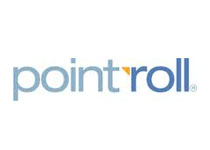 In a press release, creative ad technology firm PointRoll announced new research that it says showed, “Through ad sequencing, advertisers can actively and frequently engage users on a one-to-one basis by developing an ad sequence based on a user’s previous exposure or engagement with ads. The study found that by using sequencing, advertisers are able to better engage their audiences and facilitate them through the purchase funnel.” Read the release (PDF).
In a press release, creative ad technology firm PointRoll announced new research that it says showed, “Through ad sequencing, advertisers can actively and frequently engage users on a one-to-one basis by developing an ad sequence based on a user’s previous exposure or engagement with ads. The study found that by using sequencing, advertisers are able to better engage their audiences and facilitate them through the purchase funnel.” Read the release (PDF).
PointRoll vp of business development and analytics Max Mead discussed sequencing and its attributes.
AdExchanger.com: First, please define what you mean by “sequencing.”
MM: Sequencing is defined as a series of distinct creatives served within a single campaign. The triggers can be time-based (e.g. the creative changes daily), view-based (e.g. the creative changes after the user has seen a creative), or engagement-based (e.g. the creative changes after the user has interacted with a given creative). The latter two methods are currently only possible in the digital realm.
We get a lot of questions about how sequencing differs from retargeting. While both have the same goal of delivering a more personalized message based on a previous event, retargeting is set up as a distinct campaign, and the event triggering the retargeting is often an activity on a marketer’s website, email or other marketing channel. Sequencing, however, can be triggered by engagement with the advertisement itself. Because we typically see 5%-8% of people interacting with our ads, this creates a sizable pool of people available for future marketing. We have started working with some advertisers on a concept that we’re calling “upper-funnel retargeting” that brings this same ad engagement trigger concept into the retargeting realm and helps with scale.
We also do a lot of dynamic ads which also help personalize the ad experience. While dynamic ads are very powerful, we’ve found that sequencing is a highly accessible strategy available to larger and smaller advertisers alike.
What’s your sense of how prevalent sequencing is today for advertisers? What have been the hurdles?
Sequencing has been around for a while online—in fact PointRoll has had the capability since 2005—but it is much less common than you might think considering both how simple it is to implement and how powerful the results are. In our study, we found that sequencing increases interaction rates by almost 50 percent, increases brand time by 56 percent and increases click-thru-rates by 43 percent. When combined with impression-level buying, results can be even more impressive.
How important is understanding the placement/URL with sequencing? Is context a data point for effective sequencing?
Context is very important in advertising, but not necessarily more important for sequenced campaigns than non-sequenced campaigns. In fact, for advertisers buying from the non-guaranteed marketplace where context can be distanced from the advertisement, the creative and messaging are especially important. In other words, sequencing can be a tool that helps compensate for the lack of context.
One of my favorite examples of sequencing was actually very context-rich—our clients Razorfish and Spark executed a self-guided tour around Yahoo and other sites for Purina/Alpo. In this campaign, viewers watched various videos and interacted with the ads, turning to subsequent chapters of the unfolding story each time they clicked through the ad to a new site. (See the ad.)
Are PointRoll’s clients using sequencing today? And, how is audience buying relevant to sequencing?
Some clients use sequencing to introduce a full marketing funnel within a single campaign by using brand-heavy messages upfront, and then lower funnel /direct response creatives and offers in subsequent messages in the series. One client used escalating coupon values throughout the campaign to find each viewer’s marginal price curve. Another client used push-downs and full-page takeovers initially, then more subtle interactive ads and social features toward the end of the campaign.
Sequencing is an excellent tactic for audience-based buying because companies can purchase impressions for users who have already demonstrated an interest in the brand’s message—and users can be identified, selected, and messaged to one by one as with a retargeting campaign. Further, sequenced messages can be varied depending on what you know about the user from what they’ve explicitly told you, what you’ve learned from a third party data source or what you’re able to intuit about them based on their interactions with your ads. As one basic example, a male could receive different sequenced ads than a female.
We’re especially excited about the potential for sequencing and impression-level buying now that we’ve started to enable expandables in the non-guaranteed space.
By John Ebbert











